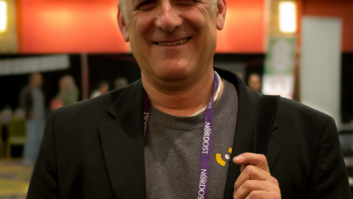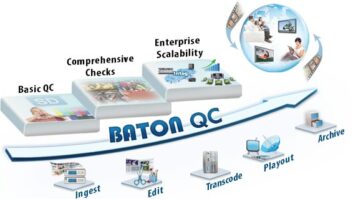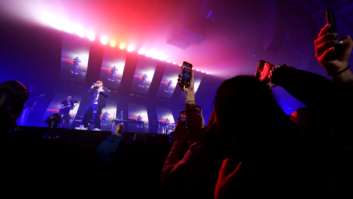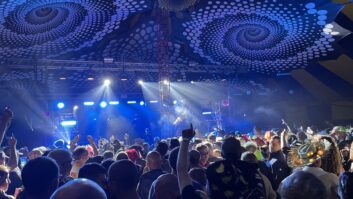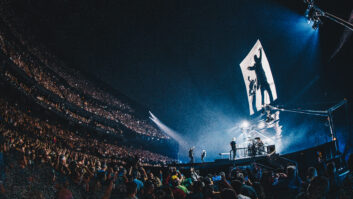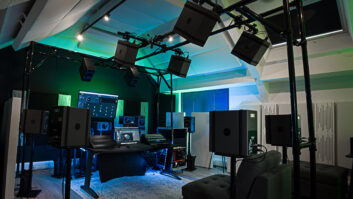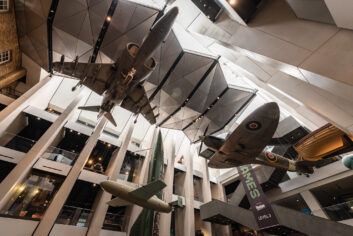 A series of near-invisible K-array ultra-compact line arrays has been installed in London’s Imperial War Museum to provide a discreet audio backdrop to its Second World War Galleries.
A series of near-invisible K-array ultra-compact line arrays has been installed in London’s Imperial War Museum to provide a discreet audio backdrop to its Second World War Galleries.
In order to maximise the realism that IWM’s collection of exhibits evokes, Sysco Productions pushed the boundaries of AV technology to create an immersive, digitally controlled audio system that takes full advantage of K-array’s ultra-compact Vyper and Lyzard line array attributes to hide these extremely discreet micro line array speakers within the structure of the galleries’ exhibits and provide a supportive ambience without being seen.
“The purpose of the audio is to support the messaging of the exhibition without detracting from it or being obtrusive,” said Sysco’s now R&D director Ben Rochlin, who during the design phase was lead engineer on the project. “We had equipped a neighbouring gallery at IWM with conventional 5-inch and 7-inch speaker boxes that sound superb but are slightly more visible within the space. In contrast however, the soundtrack for the Second World War Galleries is predominantly ambient which required a different approach in that we wanted to avoid any possible distraction that could be caused by visual impact of the speakers.”
To achieve that aim the Sysco team specified a combination of K-array Azimut systems to be deployed around the gallery, consisting of Lyzard-KZ14 arrays matched with Rumble-KU44 subwoofers and Vyper-KV25 arrays supported by Truffle-KTR26 subwoofers. All the line array speakers are visually discreet and partially concealed within the exhibit structures and so are essentially invisible, helping to build an ambience that enhances visitors’ appreciation of this iconic museum’s experience. The speaker systems are powered by K-array Kommander-KA02 4-channel DSP amplifiers.
The 10 cm-long Lyzard-K14 arrays in particular play a key role in making the soundtrack come alive, projecting audio confidently despite their diminutive size into some of the gallery’s wider landscapes thanks to their narrow vertical and wide horizontal dispersion, coupled with clearly defined coverage pattern cut-off that provides good separation as you move from one exhibit to another.
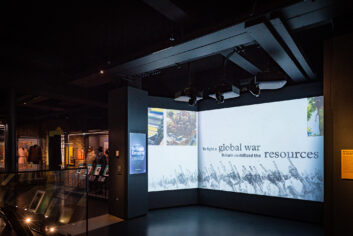 The backbone of the audio system is fully digital centred around Dante-connected Q-SYS control at its heart, completely dedicated to the job of supplying the best possible quality audio with rock-solid reliability. Alongside archival recordings from the WWII era much of the soundtrack was painstakingly and authentically assembled from modern day real-world clips, some of it captured on location in forests in Belgium with high quality microphones and recorders. All this effort of course demands realism in reproduction as well, and the combination of controlled speaker system dispersion and precise processing has produced a result that impresses while allowing the presence of the technology to simply fade into the background.
The backbone of the audio system is fully digital centred around Dante-connected Q-SYS control at its heart, completely dedicated to the job of supplying the best possible quality audio with rock-solid reliability. Alongside archival recordings from the WWII era much of the soundtrack was painstakingly and authentically assembled from modern day real-world clips, some of it captured on location in forests in Belgium with high quality microphones and recorders. All this effort of course demands realism in reproduction as well, and the combination of controlled speaker system dispersion and precise processing has produced a result that impresses while allowing the presence of the technology to simply fade into the background.
“It just works,” said Rochlin. “As you walk around the gallery you are immersed in the emotion that the soundtrack evokes, but not particularly aware where it’s coming from; you just don’t think about it. My overall aim was that I wanted it to sound natural without ever really noticing the speakers, and I think that’s what we achieved. I’m really pleased with the outcome; it was a satisfying project for us and it was nice to have the opportunity to really think about the sound system and to be able to design the whole thing without limitations.
“You have to remember that most of these types of exhibitions are designed by architects. They don’t know the ins and outs of line array technology neither we do know the specifics of architecture, but when you collaborate together you get the most interesting results, and this is a prime example.”

